How to hide electrical cords on the floor?
Except for caves, there isn’t a single place where you wouldn’t find electrical cords and cables. These electrical cables are a part of life; without them, there will be no electricity. However, while floor cable management is important, it poses several dangerous risks.
If they are exposed or damaged, they risk fire hazards. Similarly, you can easily trip due to these wires because cable bundles can tangle up and clutter to make your trip on the floor. Therefore, hiding electrical cables lurking on the floor is important.
Over several decades, there has been an evolution in cable management systems, and new cable protector types have emerged. Let’s unveil the best cable covers and systems that hide cables and keep messy cords organized.
Do you want to know more about this topic? We also have an article talking about facts about floor cable management.
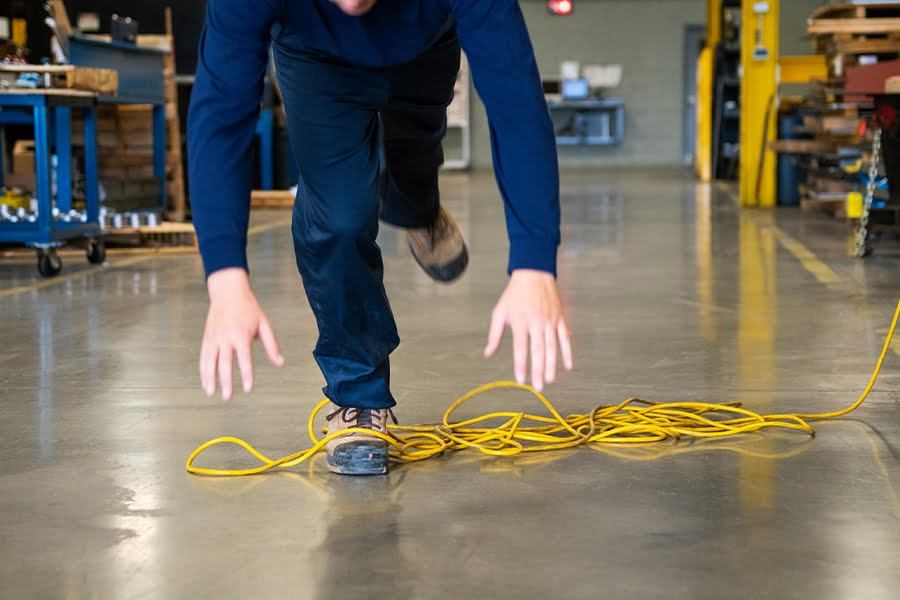
Why should you hide electrical cables?
Before identifying the best ways to hide or conceal electrical cords, you must know the deep-rooted intention to hide wires.
According to one report, around 300 deaths and 4,000 injuries occur in the USA due to cable wires. The data is for the US, and these numbers are increasingly high in developing countries like Pakistan and Bangladesh.
The fact mentioned above suffices the importance of hiding cables.
Following are some other great reasons which advocate for hiding cables:
- The wires that scatter and tangle around can increase the tripping hazards. It’s very common to see people tripping due to scattered wires. Therefore, installing cable protectors and hiding them will reduce this risk.
- It’s also important to cover the messy wires. Extension cords, lamp cords, circuit breakers, and power strips consist of many wires that may be hazardous.
If the wear and tear increase, they’ll be exposed, which can cause a fire hazard to people around them. They can even ignite a house on fire due to power surges or circuit faults.
- Suppose you’re carrying out a construction activity across a road using heavy machines. Installing heavy-duty floor cable covers will be a good idea because vehicles crossing over them may destroy the cables.
Since cables can be huge investments for some industrial factories, protecting them is important; their destruction can potentially reduce operations and add a huge repair bill.
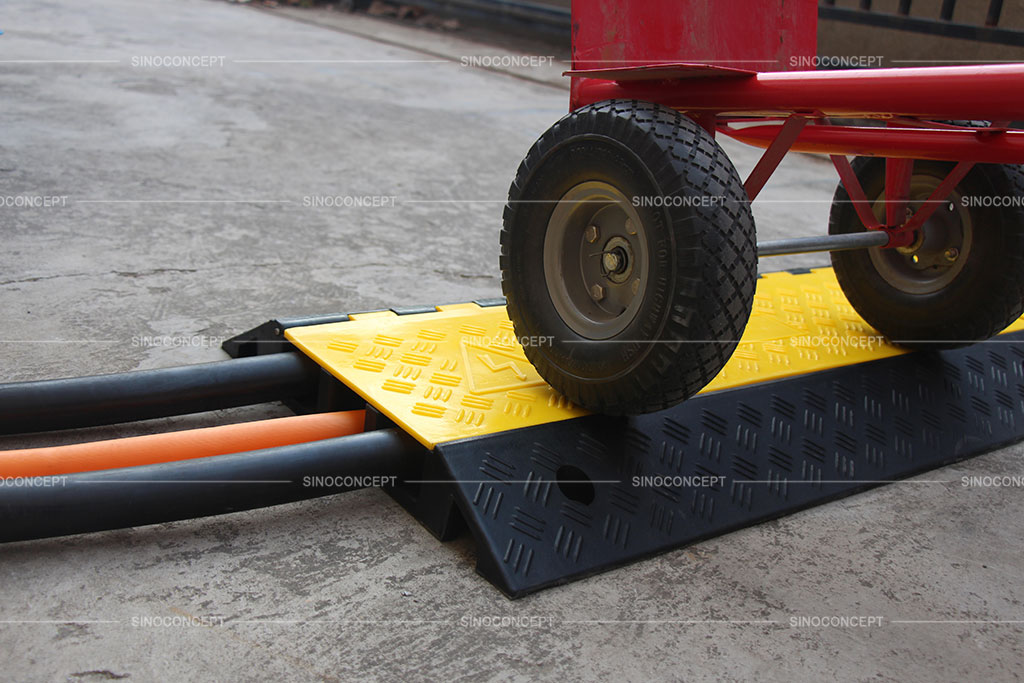
How to cover indoor electrical wires?
Look around your home and office, and you’ll realize many cables, wires, and cords surround you. Circuit breaker, power strip, headphones, HDMI data cable, ethernet cable, optic fibre cable, etc.
Plus, you’ll find your device cables in your office or work area, including computer wires, flat screen cables, and printer wires.
Since there are so many cables, keeping them organised and making the most out of them becomes essential.
Following are several great ways to hide your indoor cables and protect them:
- Floor cord covers/sidewinder cable protectors
- Extension cord reel
- Hiding behind drywalls
Floor Cord Covers
Floor cord covers are the most conventional and widely used cabling systems. They are made from reusable rubber or PVC plastic and are stable on any surface.
One of the unique features of these cord covers is that you can cut them with utility knives up to your desired length. These are perfect for cabling all sorts of power strips, wall power, adaptors, and home electrical cords.
Plus, you can install them on your own. Gently fit all the wires in the rubber tabs and enclose them carefully. Fasten it using double-sided tape and place it in the desired spot.
Similarly, sidewinder cable protectors are another unique floor cover. They are extremely flexible and are made from ABS plastic. You can turn them and fit any corner of a specific room.
Therefore, they can fit any room’s layout. Plus, they have segments that snap on to connect to each other, making configuration easy. Hence, they are an incredible solution to keep your chargers and other cables organized.
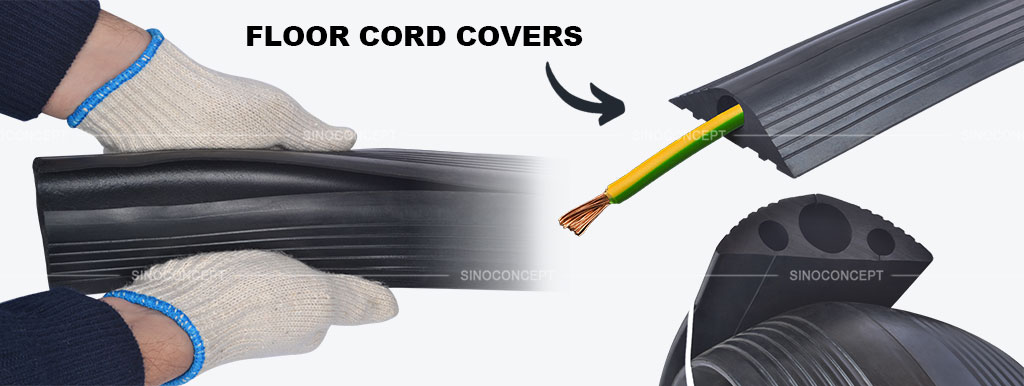
Hiding behind the walls
One of the easiest ways to remove these unsightly cords is by simply hiding them behind the wall. It can work for wall-mounted TV cables in offices or homes. The process is simple, but it would be a good idea to get it done by an electrician for better office organisation.
Following is the process of hiding your cables behind the wall:
- First, remove your TV, CCTV camera, or any other appliance from the wall.
- Find the entrance and exit spots for the wires. The exit spot is preferred to be near the socket or power outlet.
- Use a stud finder to find studs before drilling into the drywall.
- Start drilling in the specified positions and fit the cables.
- Push the cables and enclose them using screws.
- Feed cables through the entry point and pull them from the exit point.
Now, you’ll have a great organized setup of your TV cables. You’ll be better able to enjoy your Netflix without any unsightly wires near you. Alternatively, another way to hide your wires is by using command hooks.
You can hide the ethernet cables, bulbs, and lamp cables behind the furniture. The process is simple. You have to put the command hooks and fasten the entire wire around those hooks. In this way, the cables will be completely organized.
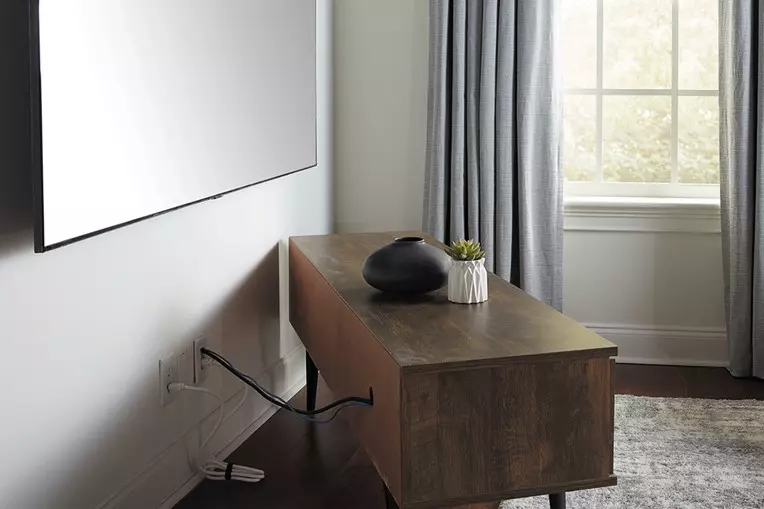
You have already read a good part of this article, 👀
We've
got the impression that you like it. 🙂
👇🏻
IF YOU ARE LOOKING TO WORK DIRECTLY WITH A MANUFACTURER,
FEEL FREE TO CONTACT US. WE ARE VERY HAPPY TO HELP!
How to cover outdoor industrial cables?
The methods mentioned earlier are perfect for indoor cables. However, large cables and cords are found in factories, workspaces, and warehouses. They are heavy fixed investments, and protecting them is quite essential.
The following are the main ways that can protect them:
- Heavy-duty cable guards
- Hose ramps
- Floor cable covers
You’ll find industrial power strips, coaxial cables, and heavy-screen TV cables in your organization. Suppose you’re involved in outside construction work and have your machinery wires spread out.
Vehicles running over and destroying your cords are the most common risk. Cable guards can cover your cables and act as speed bumps or ramps to withstand up to 20,000 kgs per axle.
Hose ramps are another prevalent cable protector in industries. Commonly seen in the fire department, they can cover the water hoses and protect them from vehicles. Since water hoses are a pretty expensive and important investment, covering them using hose ramps is essential.
Floor cable covers are another alternative to cable guards. They can withstand heavy loads and protect wires from flexible rubber or plastic.

Floor cable management systems
While cord covers and floor cable covers are quite prevalent cable protectors, there have been innovations in cable management systems. You can make changes in your infrastructure to hide cables underground and easily reconfigure them.
All this is possible due to the following solutions:
- Floor boxes
- Raised floorings
Floor boxes involve installing all the wires underground and covering them with metal plates. Concealing the wires underground hides them completely and makes the area trip-free.
Navigating and checking a floor box can easily identify and solve any electrical problem.
Raised floorings are another method that involves creating void spaces to hide wires. They are similar to floor boxes and can hide all the wires underground. Without any wire trace, your workplace is trip-free, and the wires are organized underground.
Alternatively, you can even use zip or cable ties to fasten your cables and keep them organized. Since power outlets can also cause abrasion to wires, it’s a great idea to install home cable grommets, which are round rings inserted in the outlets.
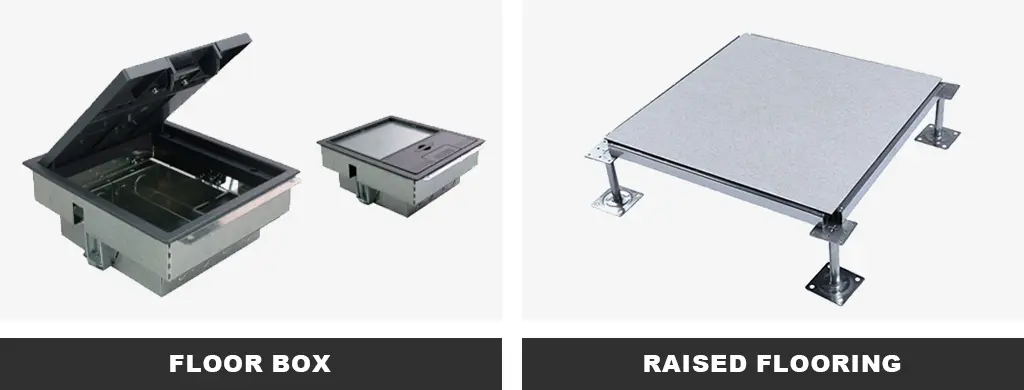
Conclusion
Wires are essential, but they can pose several dangerous risks that may have serious repercussions. Therefore, hiding these electrical wires is imperative because the wires will not only be protected, but the people around those wires will also be safe.
Do you have irregular cabling and wiring in your homes, factories, or offices? It’s time you hide them and keep them organized. Are you wondering where to get high-quality wires that will last a lifetime and keep your cabling intact?
Sino Concept is the place you must go. We provide several cable protection solutions to remove these unsightly cables and make your place wires-free. Visit our website to get quotes for our products.
👇🏻
IF YOU ARE LOOKING TO WORK DIRECTLY WITH A MANUFACTURER,
FEEL FREE TO CONTACT US. WE ARE VERY HAPPY TO HELP!





















